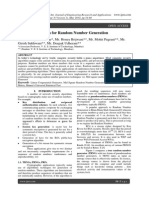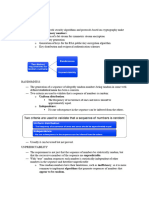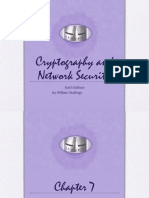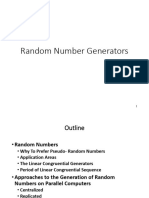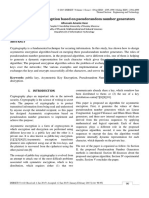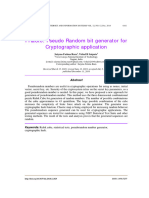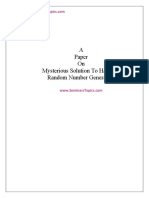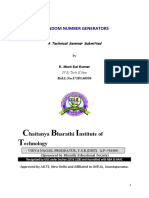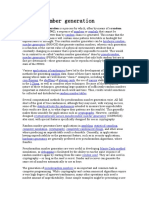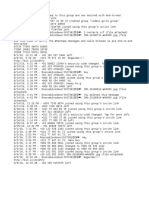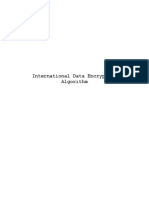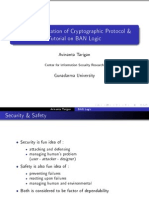0% found this document useful (0 votes)
65 views12 pagesU3 2 Random Numbers
Random numbers are critical for cryptography and require true randomness or pseudorandomness. Pseudorandom number generators use deterministic algorithms to produce numbers that appear random and pass tests of randomness. True random numbers provide better randomness but pseudorandom numbers can be an acceptable alternative if the generator meets requirements of uniformity, unpredictability, and a secure random seed. Common pseudorandom number generators include linear congruential generators, Blum Blum Shub, and block ciphers in counter or output feedback mode.
Uploaded by
NeetishCopyright
© © All Rights Reserved
We take content rights seriously. If you suspect this is your content, claim it here.
Available Formats
Download as PDF, TXT or read online on Scribd
0% found this document useful (0 votes)
65 views12 pagesU3 2 Random Numbers
Random numbers are critical for cryptography and require true randomness or pseudorandomness. Pseudorandom number generators use deterministic algorithms to produce numbers that appear random and pass tests of randomness. True random numbers provide better randomness but pseudorandom numbers can be an acceptable alternative if the generator meets requirements of uniformity, unpredictability, and a secure random seed. Common pseudorandom number generators include linear congruential generators, Blum Blum Shub, and block ciphers in counter or output feedback mode.
Uploaded by
NeetishCopyright
© © All Rights Reserved
We take content rights seriously. If you suspect this is your content, claim it here.
Available Formats
Download as PDF, TXT or read online on Scribd
/ 12








